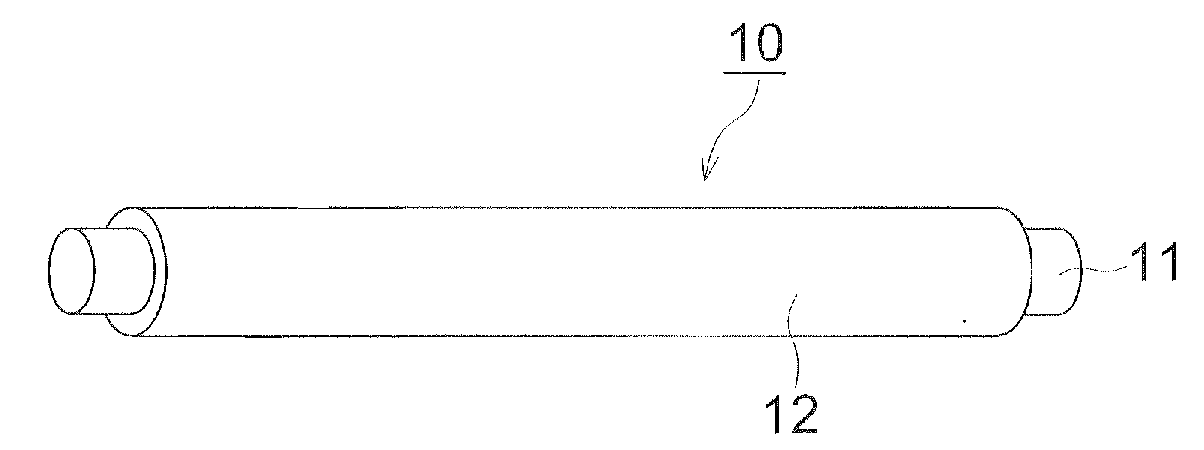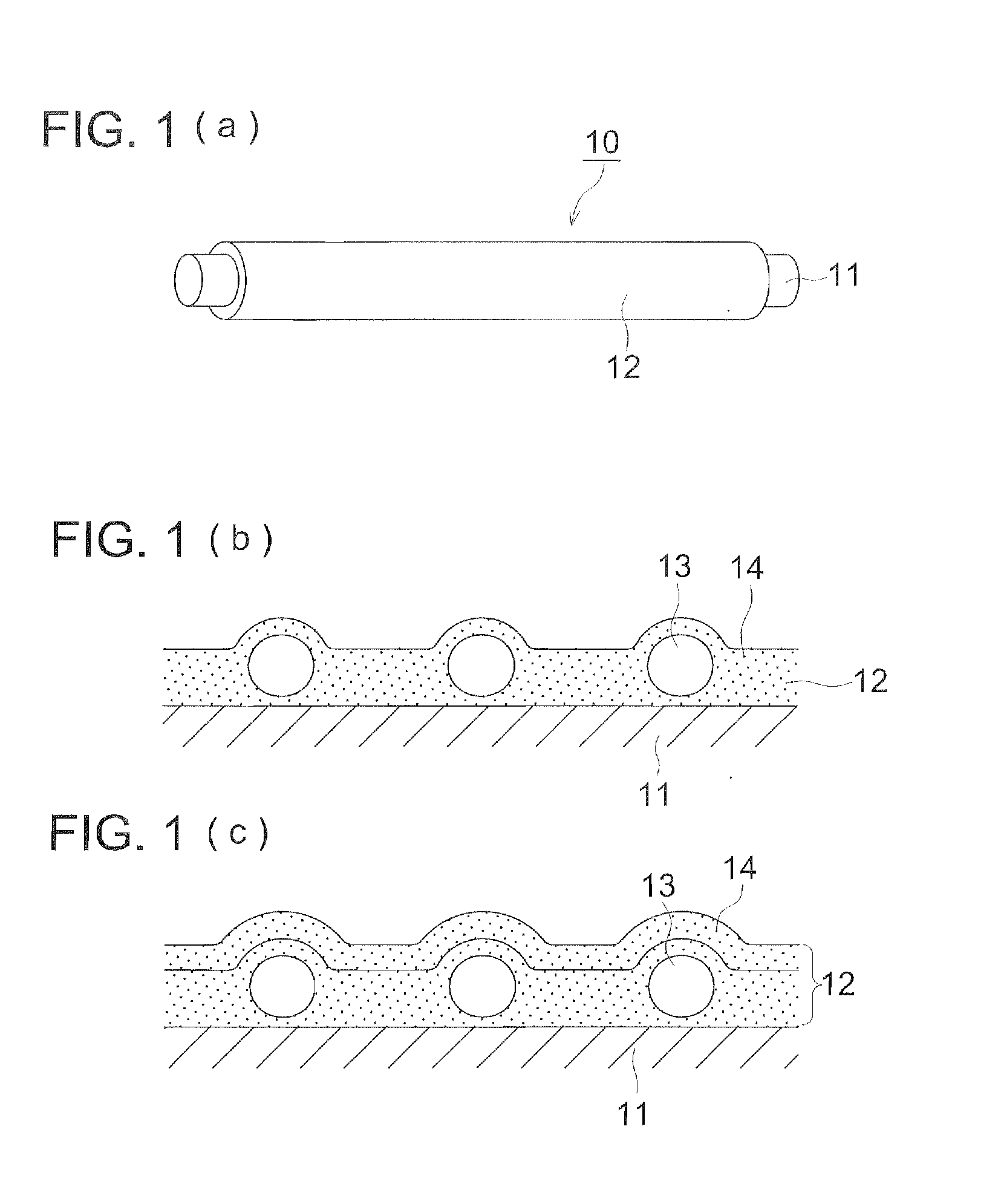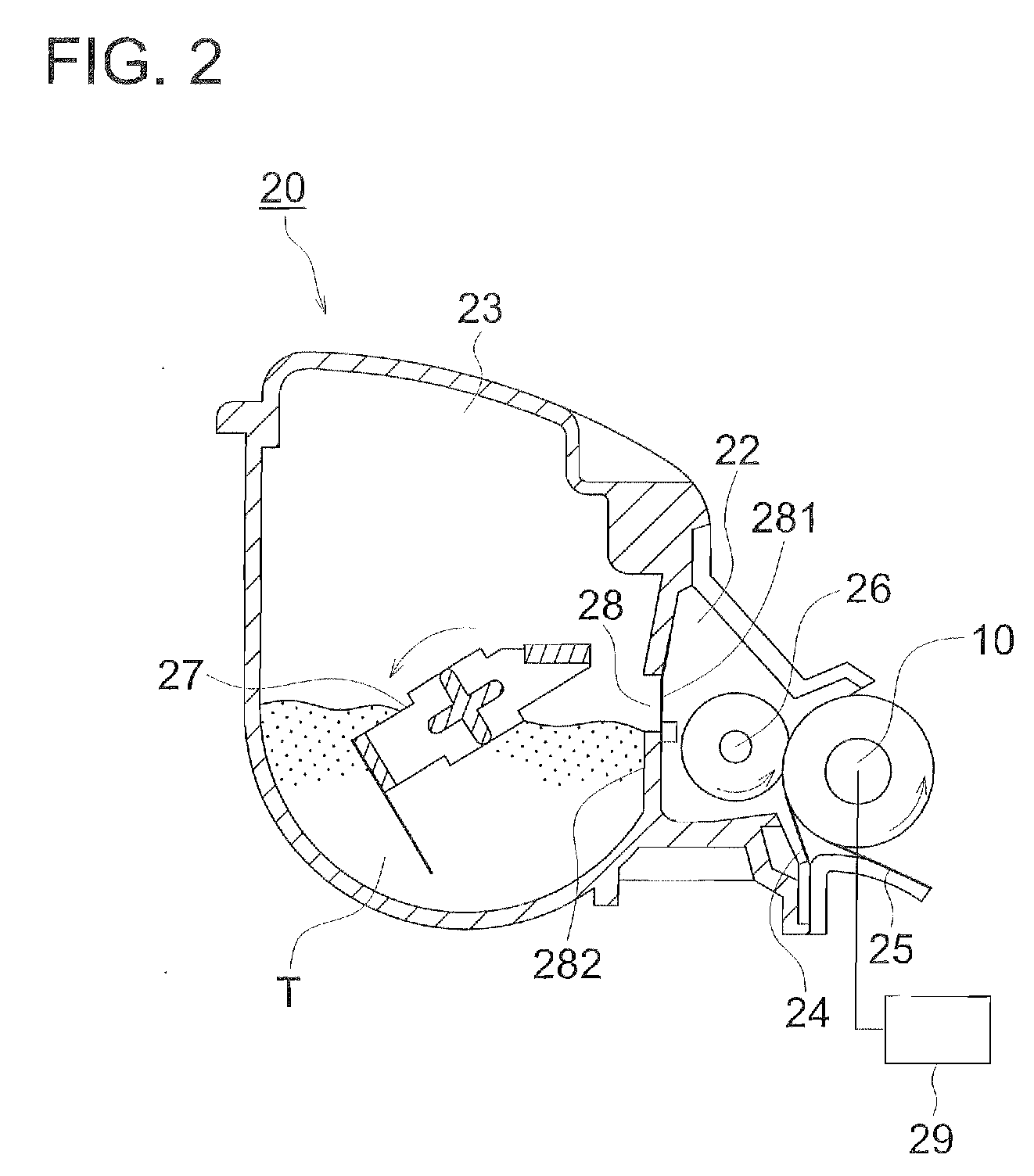[0056]It is supposed that non-
Newtonian fluid property is given to the
coating liquid by the
inorganic oxide particles when the size and the content of the
inorganic oxide particles are within the above ranges so that the
sedimentation of the resin particles 13 is inhibited and the
coating can be carried out while maintaining the uniform dispersed state. When the size of the inorganic
oxide particles is less than 5 nm, the particles is not homogeneously dispersed and coagulated in the
coating liquid so that the inorganic
oxide particles cannot assist dispersion of the resin particles and the releasing of the particles is caused. When the size of the inorganic
oxide particles exceeds 100 nm, the non-
Newtonian fluid property is not given to the coating liquid and the
sedimentation of the resin particles in the coating liquid cannot be prevented. When the content of the inorganic oxide is less than 1% by weight, the
viscosity of the coating liquid cannot be raised no longer, and when the content exceeds 40% by weight, the inorganic oxide particles are neared and coagulated with together and so that the effects of the invention cannot be realized.
[0057]The
diameter of the inorganic oxide particles is a number based average primary particle diameter. In concrete, 100 particles are randomly observed by the transmission
electron microscope with a magnitude of 100,000 times as the primary particle and Fere diameter in the horizontal direction is calculated and defined as the number average primary particle diameter as the same as the measurement of the diameter of the resin particles. When plural kinds of the inorganic oxide particles are used, 100 particles of each of the kinds of the particles are observed by the above procedure and the number
average diameter of each kind of the inorganic oxide particles is determined.
[0058]The relation of the resin particles and the inorganic oxide particles
usable in the invention is described below. The resin particles 13 and the inorganic oxide particles 14 have the relation that the diameter of the resin particles 13 is from 50 to 4,000 times as large as the
average diameter of the inorganic oxide particles. Namely, the diameter of the resin particles 13 contained in the resin layer 12 is from 50 to 4,000 times, preferably from 50 to 1,000 times, and more preferably from 100 to 400 times as large as
average diameter of the inorganic oxide particles 14. Also, the resin particles 13 and the inorganic oxide particles 14 have the relation that number based average primary particle diameter of the resin particles 13 is from 50 to 4,000 times preferably from 50 to 1,000 times, and more preferably from 100 to 400 times as large as average diameter of the inorganic oxide particles 14.
[0059]When the coating liquid satisfying the above relation is coated on the shaft 11, the coating can be smoothly carried out by the effect of the non-
Newtonian fluid property thereof. It is presumed that the coated layer is formed while the resin particles 13 are suitably dispersed state after the coating by the effect of the non-Newtonian
fluid property so as that the resin layer 12 can be formed, in which the resin particles are homogeneously dispersed. It is also presumed that the
sedimentation of the resin particles 13 in the coating liquid by the weight themselves is avoided by the non-Newtonian
fluid property caused by the inorganic oxide particles and the homogeneous dispersion of the resin particles 13 in the coating liquid can be maintained. By such the action, the resin layer 12 in which the rein particles are homogeneously dispersed is formed on the shaft 11. Therefore, it is considered that the transportation amount of the toner by thus prepared developing roller has not partiality and uniformly charging can be carried out so that the suitable toner images without density unevenness can be obtained.
[0060]The content of the resin particles 13 in the resin layer 12 is within the range of from 0.25 to 2.50 times of that of the inorganic oxide particles 14. Namely, the content of the resin particles 13 is from om25 to 2.50 times, preferably from 0.25 to 2.00, and more preferably from 0.50 to 1.50 times of that of the inorganic oxide particles. Sufficient transportation and charging can be performed by the roller surface of thus prepared developing roller when the contents of them satisfy the above relation. Consequently, suitable images without ununiformity in the density can be stably formed. It is considered that the suitable dispersion state without coagulation of the resin particles can be obtained in the coating liquid by the effect of the non-Newtonian
fluid property so that the coating liquid can he coated on the shaft 11 while maintaining the suitable dispersion state of the resin particles 13.
[0061]The resin layer forms the toner layer on the surface thereof and gives charge by triboelectricity. Moreover, strong
adhesion force is required between the resin layer 12 and the shaft 11.
 Login to View More
Login to View More  Login to View More
Login to View More 


